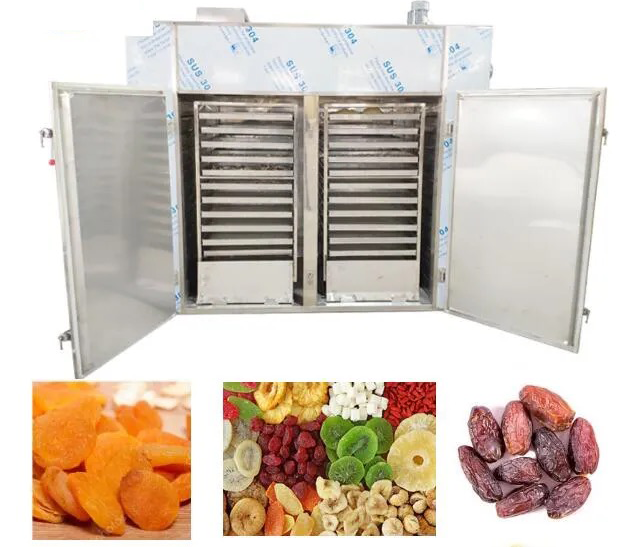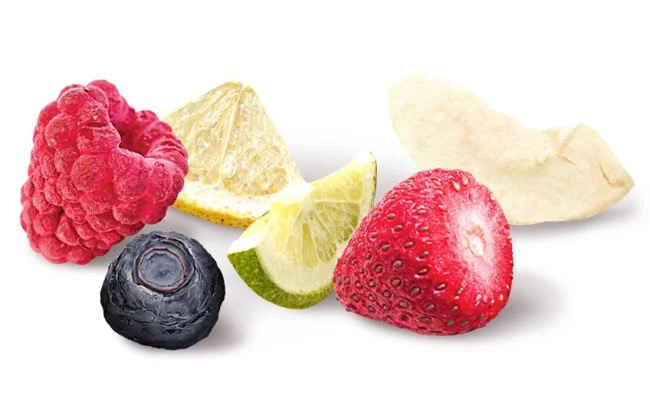
Content Menu
● Introduction
● Understanding Heat Pump Dryers
>> What is a Heat Pump Dryer?
>> Benefits of Heat Pump Dryers
● Choosing a Budget Heat Pump Dryer
>> 1. Capacity
>> 2. Energy Rating
>> 3. Features
>> 4. Brand Reputation
>> 5. Customer Reviews
● Tips for Saving Money on Your Budget Heat Pump Dryer
>> Optimize Usage
>>> 1. Load Properly
>>> 2. Pre-treat Food
>> 3. Use During Off-Peak Hours
>> 4. Maintain Your Dryer
● Energy-Saving Techniques
>> 1. Use a Thermostat
>> 2. Monitor Humidity Levels
>> 3. Utilize Natural Airflow
>> 4. Store Dried Foods Properly
● Advanced Techniques for Enhanced Savings
>> 1. Batch Drying
>> 2. Experiment with Drying Times
>> 3. Use Dehydrator Trays Wisely
● Conclusion
● FAQ
>> 1. What is the difference between a heat pump dryer and a conventional dryer?
>> 2. How much can I save on my energy bill with a heat pump dryer?
>> 3. Can I dry all types of food in a heat pump dryer?
>> 4. How often should I clean my heat pump dryer?
>> 5. Is it worth investing in a budget heat pump dryer?
Introduction
In the world of food preservation, the use of food dehydrators has become increasingly popular. These machines allow you to extend the shelf life of fruits, vegetables, meats, and herbs by removing moisture. Among the various types of food dehydrators available, heat pump dryers stand out due to their energy efficiency and effectiveness. This article will explore how to save money while using a budget heat pump dryer, along with tips for optimizing its performance and maintaining its longevity.

Understanding Heat Pump Dryers
What is a Heat Pump Dryer?
A heat pump dryer is an advanced drying system that uses a refrigeration cycle to remove moisture from food products. Unlike traditional dryers that generate heat through electric coils or gas burners, heat pump dryers recycle hot air, making them more energy-efficient. This process not only saves energy but also preserves the quality of the food being dried.
Benefits of Heat Pump Dryers
- Energy Efficiency: Heat pump dryers consume less electricity compared to conventional drying methods. They can operate at lower temperatures while still effectively removing moisture.
- Cost Savings: By using less energy, you can significantly reduce your utility bills over time. The initial investment in a heat pump dryer can pay off through these savings.
- Quality Preservation: These dryers maintain the nutritional value and flavor of the food better than other drying methods. The gentle drying process helps retain more vitamins and minerals.
- Versatility: Heat pump dryers can be used for a wide variety of foods, including fruits, vegetables, meats, and herbs. This versatility makes them an excellent choice for home cooks and food enthusiasts.
Choosing a Budget Heat Pump Dryer
When looking for a budget heat pump dryer, consider the following factors:
1. Capacity
Select a dryer that fits your needs. If you plan to dry large batches for family use or commercial purposes, opt for a model with a larger capacity. Conversely, if you only need it for small quantities, a compact model may suffice.
2. Energy Rating
Look for models with high energy efficiency ratings. They may cost more upfront but will save you money in the long run. Energy Star-rated appliances are often a good choice as they meet strict efficiency guidelines set by the U.S. Environmental Protection Agency.
3. Features
Choose a dryer with essential features such as adjustable temperature settings and timers. Advanced features like humidity sensors can help optimize drying times and improve efficiency.
4. Brand Reputation
Research brands known for reliability and customer service. A reputable brand may offer better warranties and support, ensuring that you have assistance if any issues arise.
5. Customer Reviews
Before making a purchase, read customer reviews to gauge user satisfaction and performance in real-world scenarios. Look for feedback regarding energy efficiency, ease of use, and durability.

Tips for Saving Money on Your Budget Heat Pump Dryer
Optimize Usage
To maximize savings while using your budget heat pump dryer, follow these tips:
1. Load Properly
Avoid overloading or underloading your dryer. A full load ensures efficient use of energy, while an underloaded dryer wastes electricity. Ideally, fill the dryer to about 75% capacity for optimal airflow and drying efficiency.
2. Pre-treat Food
Consider pre-treating fruits and vegetables before drying. Blanching vegetables or soaking fruits in lemon juice can enhance flavor and reduce drying time. For example:
- Blanching: This involves briefly boiling vegetables before cooling them rapidly in ice water to preserve color and nutrients.
- Soaking: Soaking fruits like apples or pears in lemon juice prevents browning and adds a pleasant tangy flavor.
3. Use During Off-Peak Hours
Run your dryer during off-peak electricity hours when rates are lower. Many utility companies offer reduced rates during certain times of the day; check with your provider to find out when these hours are.
4. Maintain Your Dryer
Regular maintenance is crucial for optimal performance:
- Clean filters regularly to ensure proper airflow.
- Check seals and gaskets for wear and tear; replacing worn parts can improve efficiency.
- Schedule professional servicing if necessary; this can help catch potential issues before they become costly repairs.
Energy-Saving Techniques
Implementing energy-saving techniques can further reduce costs:
1. Use a Thermostat
Set your dryer's thermostat to the lowest effective temperature for drying your food items. Most foods dry well at temperatures between 120°F (49°C) to 160°F (71°C). Lower temperatures not only save energy but also help preserve nutrients.
2. Monitor Humidity Levels
Dry foods in low-humidity conditions whenever possible to reduce drying time. If you live in a humid area, consider using a dehumidifier in the room where your dryer is located to enhance efficiency.
3. Utilize Natural Airflow
Whenever feasible, use natural airflow by placing your food in a well-ventilated area before transferring it to the dryer. For instance, letting herbs air-dry slightly before placing them in the dryer can reduce moisture content and speed up the process.
4. Store Dried Foods Properly
Proper storage of dried foods is essential to maintain their quality and prevent spoilage:
- Use airtight containers or vacuum-sealed bags to keep moisture out.
- Store dried foods in cool, dark places to prolong shelf life.
- Label containers with dates to keep track of freshness.
Natural Airflow
Advanced Techniques for Enhanced Savings
For those looking to delve deeper into cost-saving strategies with their heat pump dryers, consider these advanced techniques:
1. Batch Drying
Plan your drying sessions around similar types of food items that require similar drying times and temperatures. This approach maximizes efficiency by reducing energy consumption associated with heating up the machine multiple times.
2. Experiment with Drying Times
Keep track of how long it takes different foods to dry completely at various temperatures; this knowledge allows you to adjust settings based on specific items rather than relying on preset times that may waste energy.
3. Use Dehydrator Trays Wisely
If your heat pump dryer comes with multiple trays, utilize them effectively by arranging food items based on their moisture content—placing denser items on lower trays where airflow is stronger can lead to more uniform drying results.
Conclusion
Investing in a budget heat pump dryer can be a smart choice for those looking to preserve food efficiently while saving money on energy costs. By understanding how these dryers work and following best practices for usage and maintenance, you can maximize your savings and enjoy the benefits of dried foods at home.
In summary:
- Choose the right budget heat pump dryer based on capacity and features.
- Optimize usage by loading properly and running during off-peak hours.
- Maintain your dryer regularly for longevity.
- Implement energy-saving techniques to minimize costs further.
- Explore advanced techniques like batch drying for even greater savings.
By applying these strategies, you can ensure that your investment in a heat pump dryer pays off both in terms of cost savings and high-quality dried foods.

FAQ
1. What is the difference between a heat pump dryer and a conventional dryer?
A heat pump dryer uses a refrigeration cycle to dry food, making it more energy-efficient than conventional dryers that rely on electric coils or gas burners.
2. How much can I save on my energy bill with a heat pump dryer?
Savings vary based on usage but can range from 20% to 50% compared to traditional drying methods due to lower energy consumption.
3. Can I dry all types of food in a heat pump dryer?
Most foods can be dried in a heat pump dryer, including fruits, vegetables, meats, and herbs; however, specific settings may be required for different types of food.
4. How often should I clean my heat pump dryer?
It is recommended to clean filters after every use and perform a thorough maintenance check every few months to ensure optimal performance.
5. Is it worth investing in a budget heat pump dryer?
Yes, investing in a budget heat pump dryer is worthwhile as it offers long-term savings on energy bills while providing high-quality dried foods.












